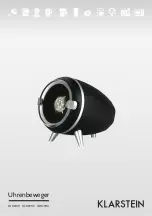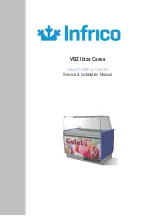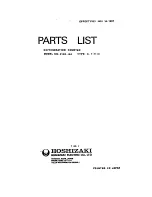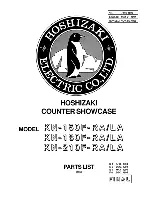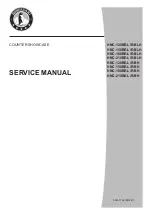
B e l g r ad o 2 - L o n d o n 3
V D L -V D A -S E L F -H 125-H 150
E n g l i s h
05060165 00 15-04-2016
54
Material
Remedy
What to avoid
Glass
•
use a soft cloth with a neutral de
-
tergent or soap and lukewarm wa
-
ter (max 30°C).
•
Immediately remove all traces of
water and detergent with a dry
cloth in order to prevent marks
from forming and to prevent liquid
from reaching the gaskets, frame,
o r t h e g l as s d o o r h i n g e s .
DO
NOT use hot water on cold glass surfaces;
the glass could crack and injure the operator.
DO
NOT use rough or abrasive materials or
metal scrapers that could scratch the glass
surfaces
DO
NOT use dirty cloths
gently place them on a flat surface, DO NOT
break or damage them
Procedure
for disas-
sembly of
the sliding
closure
devices
Pitch
Action
1
slide the glass lids towards the centre
2
move the lids upwards to make them come out from the lower rail guides
3
rotate the lower part towards the operator
4
remove the lids
5
gently place them on a flat surface protected by a soft cloth, DO NOT break or
d am
ag e t h e m
6
clean as indicated in the glass parts cleaning section (chap. 23.5)
7
Reinstall the closing devices
1
2
3-4
Plastic
(door seal
profiles)
•
use a cloth soaked in neutral deter
-
g e n t
•
clean with a cloth soaked in clean
water
DO
NOT use waxes, concentrated detergents,
which contain oil, bleach, glass cleaners, abra
-
sive detergents or flammable fluids
Aluminium
•
Use a soft cloth with a neutral de
-
tergent or soap and lukewarm wa
-
ter (max 30°C).
•
Immediately remove all traces of
water or detergent using a dry
cloth in order to prevent marks
f r o m f o r m i n g .
DO
NOT use acid or alkaline detergents (e.g.
bleach) which could corrode the surfaces
DO
NOT use rough or abrasive materials or
metal scrapers that scratch the aluminium
surfaces
DO
NOT use steam cleaning equipment
DO
NOT use dirty cloths
Wood
•
Use a soft cloth with a neutral de
-
tergent or soap and lukewarm wa
-
ter (max 30°C).
•
Immediately remove all traces of
water or detergent using a dry
cloth in order to prevent marks
f r o m f o r m i n g .
•
If necessary, before treating the en
-
tire surface, test on a small hidden
area and verify that the cleaner will
not damage the finish or colour
DO
NOT use spray cans, acid or alkaline de
-
tergents (e.g. bleach), soda or solvents which
could corrode the surfaces
DO
NOT use rough or abrasive materials that
could scratch the surfaces
DO
NOT use steam cleaning equipment
DO
NOT use rough cloths
mod
erate the use of liquid detergent: overuse
causes seepage and then swelling of the wood
24. 6 Clean the stainless steel
Certain situations can cause the formation of rust on the surfaces in steel, such as:

































